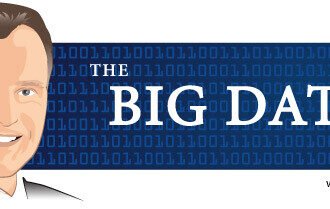I just read a fascinating book review in the Wall Street Journal Physics Envy: Models Behaving Badly. The author of the book, Emanuel Derman (former head of Quantitative Analsis at Goldman Sachs) argues that the financial models involved human beings and therefore were inherently brittle: as human behavior changed, the models failed. “in physics you’re playing against God, and He doesn’t change His laws very often. In finance, you’re playing against God’s creatures.”
I just read a fascinating book review in the Wall Street Journal Physics Envy: Models Behaving Badly. The author of the book, Emanuel Derman (former head of Quantitative Analsis at Goldman Sachs) argues that the financial models involved human beings and therefore were inherently brittle: as human behavior changed, the models failed. “in physics you’re playing against God, and He doesn’t change His laws very often. In finance, you’re playing against God’s creatures.”
I’ll agree with Derman that whenever human beings are in the loop, data suffers. People change their minds based on information not available to the models.
I also agree that human behavioral modeling is not the same as physical modeling. We can use the latter to provide motivation and even mathematics for human behavioral modeling, but we should not take this too far. A simple example is this: purchase decisions sometimes depend not on the person’s propensity to purchase alone, but also on whether or not they had an argument that morning, or if they just watched a great movie. There is an emotional component that data cannot reflect. People therefore behave in ways that on the surface are contradictory, seemingly “random”, which is way response rates of 1% can be “good”.
However, I bristle a bit at the the emphasis on the physics analogy. In closed systems, models can explain everything. But once one opens up the world, even physical models are imperfect because they often do not incorporate all the information available. For example, missile guidance is based on pure physics: move a surface on a wing and one can change the trajectory of the missile. There are equations of motion that describe exactly where the missile will go. There is no mystery here.
However, all operational missile guidances systems are “closed loop”; the guidance command sequence is not completely scheduled but is updated throughout the flight. Why? To compensate for unexpected effects of the guidance commands, often due to ballistic winds, thermal gradients, or other effects on the physical system. It is the closed-loop corrections that make missile guidance work. The exact same principal applies to your car’s cruise control, chasing down a fly ball in baseball, or even just walking down the street.
For a predictive model to be useful long-term, it needs updating to correct for changes in the population the models are applied to, whether the models be for customer acquisition, churn, fraud detection, or any model. The “closed-loop” typical in data mining is called “model updating” and is critical for long-term modeling success.
The question then becomes this: can the models be updated quickly enough to compensate for changes in the population? If a missile can only be updated at 10Hz (10x / sec.) but uncertainties effect the trajectory significantly in milliseconds, the closed-loop actions may be insufficient to compensate. If your predictive can only be updated monthly, but your customer behavior changes significantly on a weekly basis, your models will be behind perpetually. Measuring the effectiveness of model predictions is therefore critical in determining the frequency of model updating necessary in your organization.
To be fair, until I read the book I have no quibble with the arguments. The arguments here are based solely on the book review and some ideas they prompted in my mind. I’d welcome comments from anyone who has read the book already.
The book can be found on amazon here.







